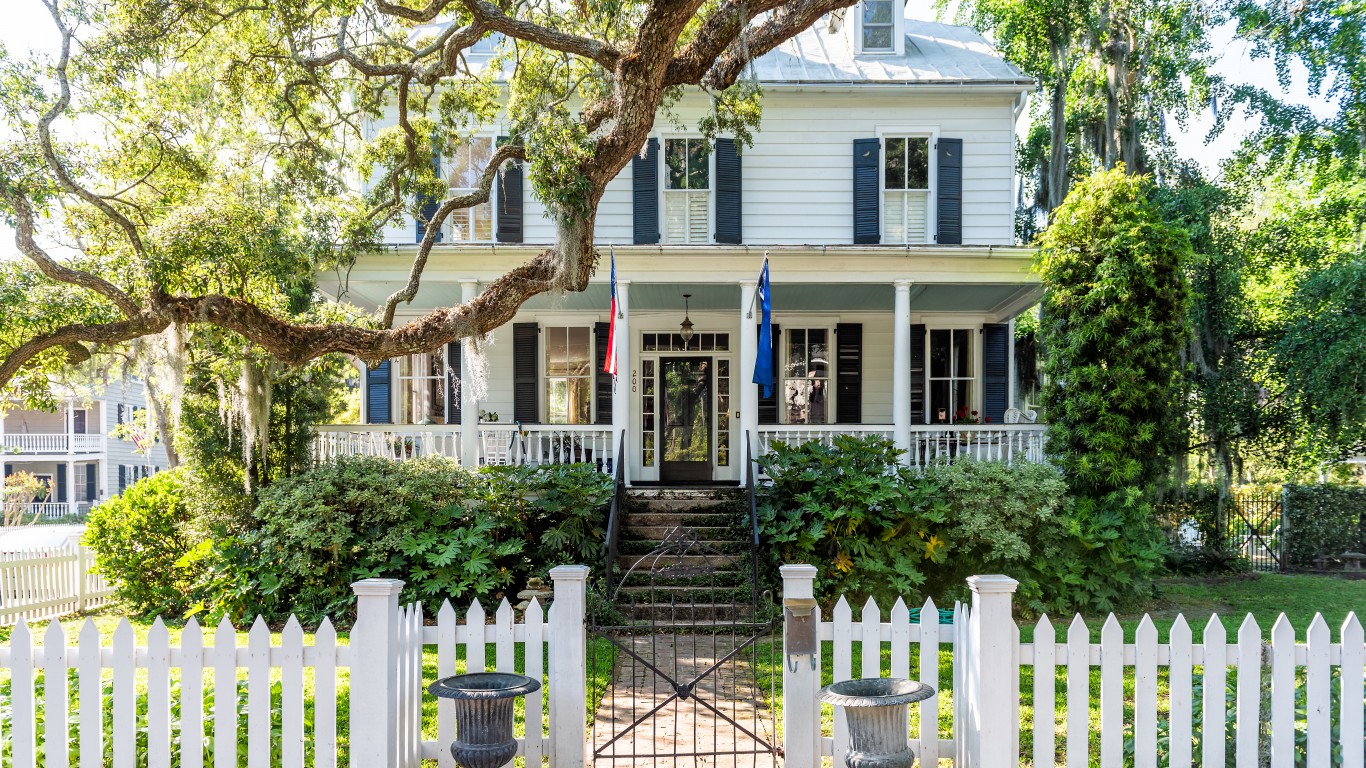

For many, homeownership is the cornerstone of the American Dream. As of January 2021, a typical single-family home in the United States costs $269,039. Of course, home values are not uniform across the country, and in some states, the typical home costs far more than the national average — while in others, homes cost far less.
According to estimates from Zillow, a Seattle-based real estate data company, the value of a typical single-family home in Vermont is $277,364, about 3% higher than the national average.
Housing prices are determined by supply and demand forces as well as what local residents are willing to pay — and that is influenced largely by what they can afford. As a result, areas with higher than average home values often also have higher-income residents. Vermont is an exception, however. The typical household in the state earns $63,001 annually, $2,700 less than the national median household income of $65,712.
Just as home values are higher than average in Vermont, the overall cost of living is too. The average cost of goods and services across the state are 3% more than they do nationwide, on average.
Across Vermont, home values are climbing at a relatively slow pace. The value of a single-family home across the state increased by 6.06% over the one year period from January 2020 to January 2021, 3.05 percentage points slower than the average national one-year home value appreciation of 9.12%.
| State: | Value of a typical single-family home: | 1-yr. increase in home value: | Median household income: |
|---|---|---|---|
| Hawaii | $683,470 | 4.7% | $83,102 |
| California | $624,977 | 10.5% | $80,440 |
| Massachusetts | $474,673 | 10.4% | $85,843 |
| Washington | $470,304 | 12.7% | $78,687 |
| Colorado | $442,766 | 8.6% | $77,127 |
| Oregon | $402,573 | 10.0% | $67,058 |
| Utah | $401,053 | 13.3% | $75,780 |
| New Jersey | $376,866 | 10.6% | $85,751 |
| New York | $350,545 | 7.7% | $72,108 |
| Idaho | $348,483 | 18.9% | $60,999 |
| Maryland | $341,148 | 8.5% | $86,738 |
| Rhode Island | $340,811 | 11.9% | $71,169 |
| Nevada | $332,501 | 8.6% | $63,276 |
| New Hampshire | $330,976 | 12.4% | $77,933 |
| Montana | $324,813 | 9.8% | $57,153 |
| Arizona | $315,554 | 16.5% | $62,055 |
| Virginia | $307,964 | 7.8% | $76,456 |
| Alaska | $292,066 | 0.6% | $75,463 |
| Connecticut | $288,822 | 11.5% | $78,833 |
| Delaware | $284,787 | 9.6% | $70,176 |
| Minnesota | $283,127 | 8.0% | $74,593 |
| Vermont | $277,364 | 6.1% | $63,001 |
| Maine | $276,023 | 12.3% | $58,924 |
| Florida | $270,560 | 8.6% | $59,227 |
| Wyoming | $262,517 | 3.6% | $65,003 |
| North Dakota | $239,464 | 2.7% | $64,577 |
| New Mexico | $229,947 | 11.0% | $51,945 |
| North Carolina | $225,740 | 9.3% | $57,341 |
| South Dakota | $225,662 | 5.7% | $59,533 |
| Texas | $224,466 | 7.5% | $64,034 |
| Georgia | $223,945 | 9.2% | $61,980 |
| Illinois | $219,806 | 6.2% | $69,187 |
| Pennsylvania | $215,939 | 9.6% | $63,463 |
| Wisconsin | $213,537 | 9.6% | $64,168 |
| Tennessee | $207,727 | 10.3% | $56,071 |
| South Carolina | $206,647 | 7.9% | $56,227 |
| Nebraska | $192,584 | 7.4% | $63,229 |
| Michigan | $192,093 | 9.9% | $59,584 |
| Missouri | $180,253 | 9.1% | $57,409 |
| Louisiana | $178,987 | 4.5% | $51,073 |
| Indiana | $172,769 | 9.3% | $57,603 |
| Ohio | $168,226 | 10.4% | $58,642 |
| Kansas | $167,540 | 8.1% | $62,087 |
| Kentucky | $160,589 | 7.5% | $52,295 |
| Iowa | $158,930 | 3.6% | $61,691 |
| Alabama | $158,809 | 8.9% | $51,734 |
| Arkansas | $142,070 | 6.7% | $48,952 |
| Oklahoma | $141,933 | 7.2% | $54,449 |
| Mississippi | $134,125 | 4.8% | $45,792 |
| West Virginia | $113,626 | 4.7% | $48,850 |
This is How Much Home You Can Buy For 200K in Every State
Sponsored: Want to Retire Early? Here’s a Great First Step
Want retirement to come a few years earlier than you’d planned? Or are you ready to retire now, but want an extra set of eyes on your finances?
Now you can speak with up to 3 financial experts in your area for FREE. By simply clicking here you can begin to match with financial professionals who can help you build your plan to retire early. And the best part? The first conversation with them is free.
Click here to match with up to 3 financial pros who would be excited to help you make financial decisions.
Thank you for reading! Have some feedback for us?
Contact the 24/7 Wall St. editorial team.



